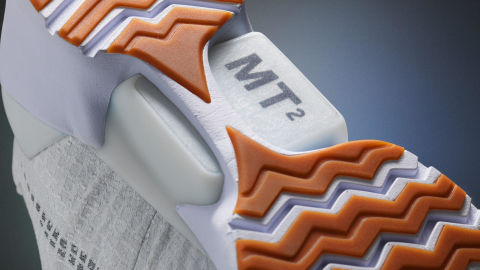Didn't your competent? doctor start using this years ago? Oh, you don't have a functioning stroke doctor, do you?
Moterum I Stride device (4 posts to March 2019)
Stroke therapy shoe empowers patients' recovery
In a rural village near Guadalajara, Mexico, Maria Magdalena Valencia Juares, known as Elena, has to climb 120 stairs to get to her home on the top of a hill. It's a source of exercise for the 70-year-old and the connection to her longtime community below. But a stroke in 2021 left her isolated in her 1,000-square-foot home. Her feet, too unsteady for stairs; her state of mind, declining with the compounded loneliness caused by the COVID-19 pandemic.
Valencia Juares wasn't formally educated, so her world depends on social interaction. However, the muscle weakness caused by her stroke and the risk of falling made that difficult to obtain. Her family lives thousands of miles away, her daughter Noemi Armenta in Los Angeles, and her unofficially adopted daughter, KC Hostetler, in Alaska. They saw from afar the toll Valencia Juares's stroke was having on her mental health and started searching for solutions in the United States.
"I had not been able to get back to Mexico because of COVID, so it had been a while since I was able to see her," Hostetler said. "By the time I reached her, she was in a really tough spot mentally and she was in a depression. We talked about how we can fix this, and she said she needed something that could stabilize her leg."
"Before the iStride treatment, I was isolated. Every day was a struggle, and I became desperate and very sad," Valencia Juares said. "I taught myself to get around the best I could so that I could try to do chores. I felt like such a burden. It was very hard."
Hostetler found information online about the iStride device, invented and patented by Kyle Reed, associate professor of mechanical engineering at USF, and licensed by Moterum Technologies Inc. The iStride is a portable, lightweight device designed for stroke patients that helps improve their walking ability. It straps over the patient's shoe on the good side of their body and the specially designed wheels generate a corrective motion during each step. Repeated use results in the stroke-impacted leg getting stronger and an improved gait once the shoe is removed.
After months of coordination, Hostetler and Armenta brought their mother to North Carolina to get therapy on the iStride device. They practiced what many take for granted—shifting from a sitting to standing position and walking. They walked up and down the halls over and over again on the iStride device, soon able to walk without a cane.
"The iStride gait device challenges the wearer by destabilizing the unimpaired leg, promoting increased use of the affected side," Reed said. "This changes the gait pattern so walking becomes easier after each session with an increased gait speed and reduction in gait asymmetry."
After about a month of therapy on the iStride, Valencia Juares returned home to Mexico, climbed all 120 stairs, and danced ecstatically when she got to the top.
"She was dancing. She hasn't danced in years, and being able to express that sense of joy since her incident has been really amazing," Hostetler said. "It's been amazing to see that transformation, she's much more like the person we knew before the stroke."
Valencia Juares's success story is far from anecdotal. Reed just published a study in the academic journal Frontiers in Neurology that examined the long-term impact of the iStride on gait speed in stroke survivors. The research team worked with 18 individuals who suffered a stroke, averaging within the last five years. Each patient received three, 30-minute therapy sessions a week for four weeks and had their gait checked several times over the course of the following year.
The results were rapid, with gait speed up an average of 50% within one month of starting therapy. What's even more remarkable, the improvements remained mostly unchanged one year after the iStride therapy sessions concluded. The average patient is now walking 0.21 meters per second faster than they were before the start of the study, averaging 0.74 meters per second. According to the National Institutes of Health, the walking speed of an average healthy adult ranges between 0.9 and 1.3 meters per second.
Reed says this is one of the greatest improvements ever recorded in an academic journal that's focused on enhancing gait speed in stroke survivors. He's published several related studies since he patented the iStride a few years ago—one dedicated to using the iStride at home—but this was by far the toughest paper to place.
"The paper was initially rejected because one of the early reviewers stated that the gait speed improvement was way beyond what had previously been reported in the literature," Reed said. "Showing the reviewers videos of the subjects walking before and after therapy helped them understand the dramatic difference."
"Moterum is shifting the paradigm of stroke. Hope is a powerful tool," said Lauren S. Rashford, president of Moterum Technologies. "Providing personalized journeys and meeting each patient where they are at allows us to create a relationship that has been proven to instill and expand hope in each life."
More information: Brianne Darcy et al, One-year retention of gait speed improvement in stroke survivors after treatment with a wearable home-use gait device, Frontiers in Neurology (2024). DOI: 10.3389/fneur.2023.1089083
Explore further










